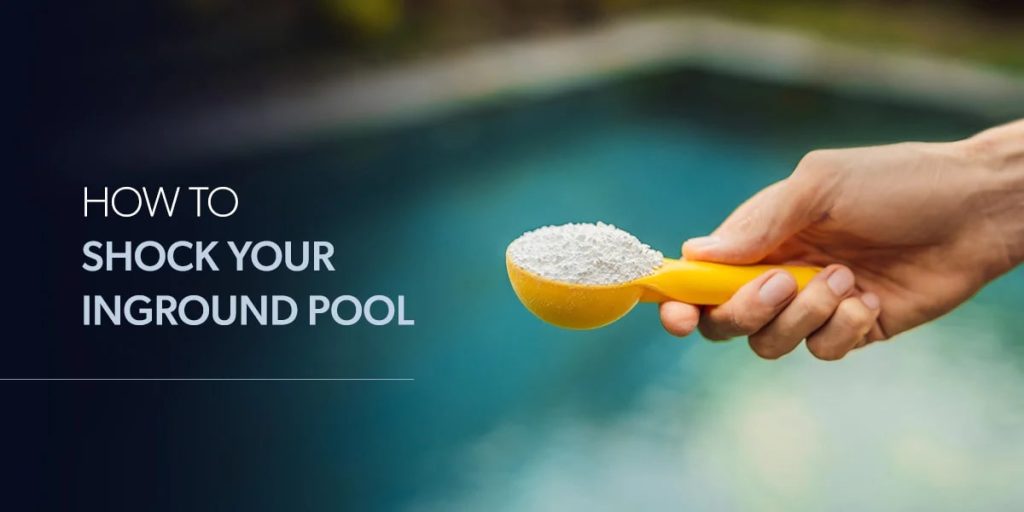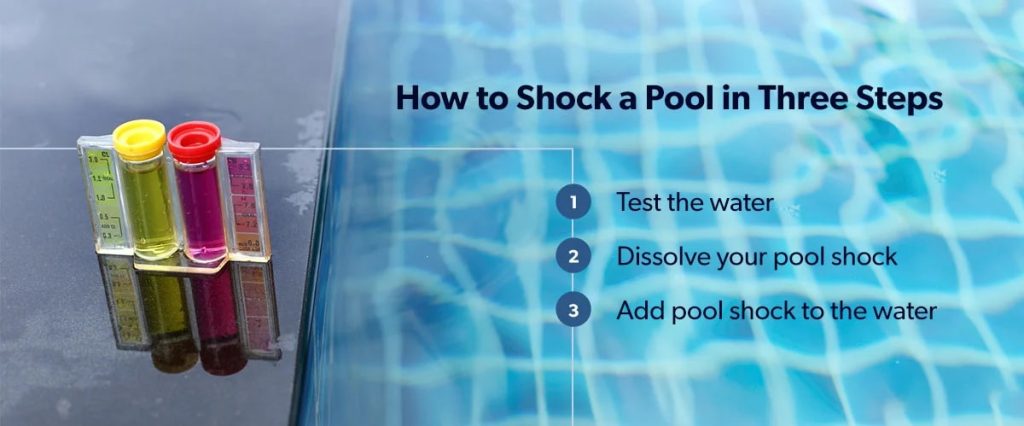

Owning a pool can be one of life’s joys. It brings joy and relaxation to you, your friends and your family during hot summer days and casual weekend afternoons. Having a pool also enhances your property’s value, making it a valuable investment when you put in the proper level of upkeep.
The good times require upkeep, though. Every pool owner must work hard to keep their pool in good shape. Your pool may see a lot of action as the main attraction to your parties and get-togethers, so it’s up to you to make sure the water stays clean and safe to swim in.
This article will help you learn how to shock your pool so that you can get the most out of it this season and for years to come.
Shocking your pool is the act of adding a specific chemical to oxidize the chloramines in your pool’s water.
Chloramines are a natural chemical byproduct of swimming in chlorinated water. They form when free available chlorine (FAC) binds to the sweat, oils and cosmetics that swimmers carry into the pool, becoming combined available chlorine (CAC). As more chloramines form, the water loses its sanitizing ability.
Shocking — or “super chlorinating” — your pool lets you destroy those chloramines. By bringing the water back to a proper level of FAC, you can restore your pool to a safe, sanitary condition.
You can choose from many types of pool shock supplies depending on your needs and preferences, the most important of which is the shock itself. Here are some of the options you may encounter:
Handling pool shock can be dangerous, so it’s important to protect yourself. Be sure to wear protective gear when shocking your pool, including:
You should also have a liquid testing kit on hand, as well as a five-gallon bucket and a wooden stick for dissolving the shock before adding it to your pool.

Once you’ve chosen the right pool shock product for your specific needs, it’s time to get to work. Here are three steps for shocking your pool:
Remember always to shock your pool at dusk. The sun’s ultraviolet rays may break down the shock in the water, so shocking your pool during the day risks losing the chlorine’s effectiveness.
Check the manufacturer’s directions for the pool shock product you’re using. Along with instructions for using the product safely, you’ll find information about how long the product will take to work.
Using your pool too soon after shocking it can lead to:
If you add shock to your pool after dusk, the water should be fully shocked and safe to use by the next day. However, you should always follow the manufacturer’s instructions and test the water before use to confirm that the chlorine content has reached a safe level.
How Often Should You Shock Your Inground Pool?
We recommend shocking your inground pool once a week with regular use or at least once every two weeks with light use. Any longer than that will risk your pool developing unwanted conditions that can be difficult to correct. Work shocking your pool into your weekly routine for the best results.
Apart from the regular schedule, you should also shock your pool:
Now that you know how to shock an inground pool, you can see that this essential part of pool care demands a lot of time and effort. If you’d rather let someone else handle that part of your pool care, then Lotus Pools is the answer you’ve been looking for.
Our weekly maintenance services include shocking your pool to keep it clean and ready for all your summer swimming fun. We invite you to schedule a service call online today to take the next step toward enjoying your inground pool more this year.